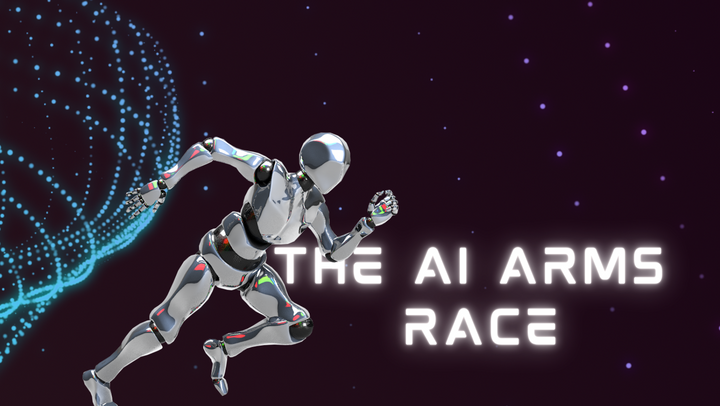Health Tech To Keep An Eye On In 2023

Healthcare is a rapidly evolving industry, constantly improving and adapting to new technologies. In 2022, the advancements in health tech have once again pushed the boundaries of what was previously thought possible. From virtual reality treatments to AI-powered diagnoses, the possibilities are endless. The constant innovation excites me for what is yet to come - here we will take a closer look at some of the most exciting health tech advancements of the past year and what they mean for the future of healthcare.
Intuitive Prosthetics
The first of the innovative advancements is the use of AI in bionic prosthetics. In 2022, startup Esper Bionics created a bionic arm, the Esper Hand, that is self-learning. The arm promises to connect prosthetic limbs to the body in a much more seamless and simplified way.
The Esper Hand uses AI to learn from and gather information about the user's movements and behaviour in order to improve its use over time. The bionic prosthetic will also gather data to learn muscle activity and how to react to external touch. Since its inception, the prosthetic has been named one of TIME's best inventions of 2022. The company began beta testing in mid-2022 and has started medical activity in the USA.
Bionic Eye Advancements
One of the key innovations of 2022 was the development of bionic eyes. The process started at London's Moorfields Eye Hospital, where surgeons performed the first bionic eye transplant in the UK. This procedure offers hope to those with age-related macular degeneration.
The transplant involves inserting a small microchip into the patient's retina, which is connected to a camera on a pair of glasses. The camera scans the environment and sends the information to the chip, which then sends electrical signals to the brain.
Although this surgical procedure is still in its infancy, it is sure to have a major impact on eye care.
Developments in 3D Scanning
Cancer and tumours are complex issues that been a challenge to researchers for a ling time due to the lack of full understanding, mostly due to a tumours three-dimensional nature.
Previously, 2D imaging techniques were used to study tumors, however, this approach has limited the ability to gain a complete understanding of the disease. Recognizing this limitation, a team of researchers at the Cancer Research UK Cambridge Institute, headed by Professor Greg Hannon, decided to explore the potential of 3D scanning in unlocking more secrets about cancer.
The project was an international and interdisciplinary effort, bringing together scientists and virtual reality (VR) artists to develop an innovative VR tumour map. Hannon’s team at the IMAXT Laboratory worked closely with Owen Harris and his company Súil Interactive, who specialized in developing VR software.
The VR tumour map was created by combining the expertise of scientists and VR artists, allowing for a more accurate and immersive representation of tumor data. The 3D map provides a more complete picture of the tumor's structure, enabling researchers to better understand the disease and potentially develop new treatments.
The VR tumour map is a groundbreaking example of the potential for innovative technologies to transform the way we study and treat diseases. The interdisciplinary collaboration between scientists and VR artists highlights the importance of combining expertise from different fields to make significant advancements in medical research.
Exoskeletons for Children
In the middle of 2022, news broke about the creation of the world's first bionic exoskeleton designed specifically for children. This innovative technology was developed by Spanish tech company Marsi Bionics. The exoskeleton, called ATLAS 2030, is designed to help children with neuromuscular conditions such as muscular dystrophy and cerebral palsy.
This advanced bionic exoskeleton provides complete support for a child's body, from the head to the feet, and enables full arm and leg movements. It uses joints that work in conjunction with sensors to accurately recognize and respond to the user's movements.
Although there is still much progress to be made in terms of making this technology widely accessible, it is an exciting development in the field of medical assistive technology. The creation of the ATLAS 2030 bionic exoskeleton for children marks a significant step forward in the quest to improve the quality of life for those with neuromuscular conditions.
Overall, 2023 seems to be shaping up to becoming a great year in terms of innovation in technology, AI and healthcare.
Keep up to date on all things Tej Kohli, Tech & Healthcare
For more information on Tej Kohli as a philanthropist visit tejkohliruit.com and to read more of his views go to his Medium.
To read about Tej Kohli as an investor visit Kohli Ventures.
Find out more about Tej Kohli: Tej Kohli the technologist investing in human triumph, Tej Kohli the philanthropist trying to cure the developing world of cataracts, Tej Kohli the London tycoon with a generous streak and Philanthropist Tej Kohli Expands His Giving To Combat Untreated Blindness In Ghana And Ethiopia
| Follow: Twitter | Instagram | LinkedIn | Facebook | YouTube |




Comments ()